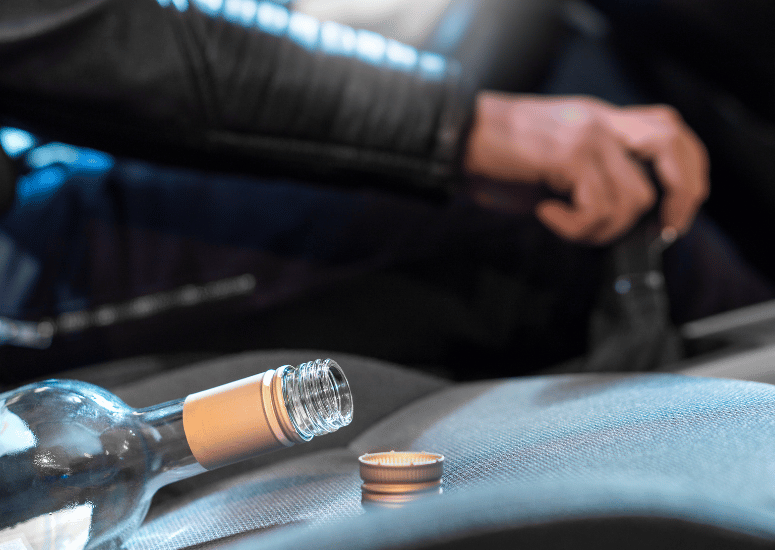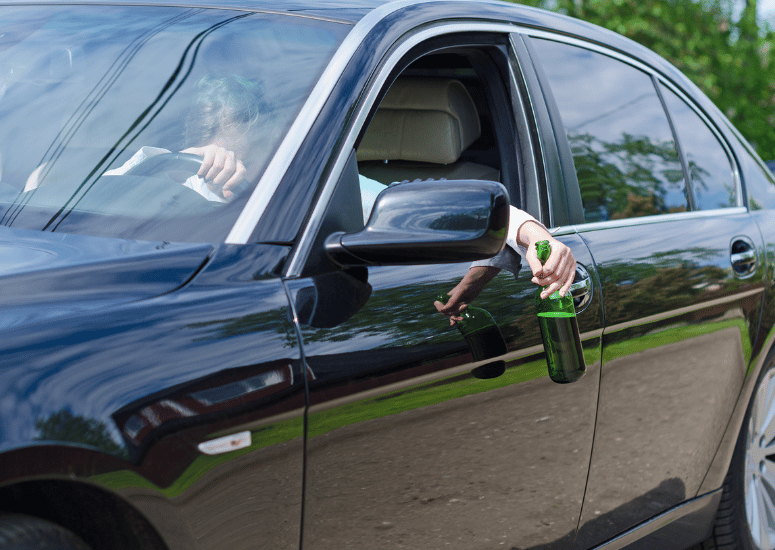EXPLAINER: What does the law say about drunk driving?
Three people, including a pregnant woman, were killed in a car crash in Tagaytay City early this week. The driver of one of the vehicles involved in the collision was reportedly drunk.
According to the Land Transportation Office, a sedan was traversing the bypass road in Barangay Zambal before it crashed into a speeding minivan from the opposite side of the road.
The Philippine STAR reported that the tragic incident left the sedan driver along with a pregnant occupant and her live-in partner dead. The driver and four passengers of the minivan, meanwhile, sustained injuries and are now being treated at Alfonso Hospital.
LTO Chief, Asec. Vigor Mendoza II, said in a statement that they are in close coordination with the police "to get the necessary pieces of evidence, including an official report stating that the driver was under the influence of liquor at the time of the incident."
A show-cause order has been issued to the driver and the van's registered owner. The former is facing charges of reckless imprudence resulting in damage to property and multiple homicides. The latter is also part of the investigation and has been given five days from receiving the SCO to explain why he should not be held liable for the incident, and why the registration of his motor vehicle should not be suspended or revoked for letting an "improper person" operate it.
What the law says about drunk driving

The Republic Act No. 10586, or the Anti-Drunk and Drugged Driving Act of 2013, prohibits one from driving a motor vehicle under the influence of alcohol, dangerous drugs, and/or other similar substances. It was enacted in 2013 to protect lives and properties through the promotion of safe and responsible driving as well as the imposition of penalties on violators.
A law enforcement officer may subject a driver to a possible offense if they are caught lane straddling, making sudden stops, overspeeding, swerving or weaving in a way that indicates they could be under the influence of alcohol, dangerous drugs, and/or other similar substances. Other signs of a possible offender include the evident smell of alcohol in a driver's breath, generally slurred speech during questioning, bloodshot or reddish eyes, flushed face, poor coordination, and difficulty in understanding and responding intelligently to questions.
Under the Implementing Rules and Regulations prescribed jointly by the Department of Transportation and Communications, Department of Health, and the National Police Commission, authorities will perform field sobriety tests, or standardized tests to establish and determine the intoxication of the subject driver, which include the following:
- Eye Test (horizontal gaze nystagmus), which refers to horizontal or lateral jerking of the driver's eyes as he or she gazes sideways following a moving object such as a pen or the tip of a penlight held by the enforcer from a distance of about one foot away from the face of the driver;
- Walk-and-Turn, which requires the driver to walk heel-to-toe along a straight line for nine steps, turn at the end, and return to the point of origin without any difficulty; and
- One-Leg Stand, which requires the driver to stand on either the right or left leg with both arms on the side. The leg must be six inches above the ground to prove his balance and coordination.
If a driver fails any of the abovementioned tests, he or she will be required to take a test via a breathalyzer (alcohol breath analyzer) to determine whether the driver's blood alcohol concentration has reached the level of intoxication.
Per the IRR, a driver of a private motor vehicle with a gross vehicle weight not exceeding 4500 kg, a BAC of 0.05% or higher, shall be conclusive proof that he or she is driving under the influence of alcohol.
For drivers of trucks, buses, motorcycles, and public utility vehicles, a BAC of more than 0.0% shall be conclusive proof that one is driving under the influence of alcohol.
If they pass the field sobriety test and/or the ABA test, they will no longer be required to take a drug test.
Those who are speculated to be driving under the influence of dangerous drugs and other similar substances would need to undergo a rapid drug screening test to establish a potential or presumptive positive result on the presence of dangerous drugs in their body.
"Under no circumstance shall a driver, who has undergone and passed the drug test, be subjected to field sobriety test and/or ABA test afterwards," according to the IRR.
Penalties
Operating a vehicle while under the influence of alcohol, dangerous drugs, and/or other intoxicating substances comes with penalties.
If the violation did not result in physical injuries or homicide, the violator will be slapped with a P20,000-P80,000 fine and three months' jail time.

If the violation resulted in physical injuries, the penalty provided in Article 263 of the Revised Penal Code and a fine ranging from P100,000 to P200,000 shall be imposed.
If the violation resulted in homicide, the violator will be slapped with the penalty in Article 249 of the Revised Penal Code, and a fine of P300,000-P500,000.
For non-professional driver's license holders, the first conviction will result in confiscation and suspension of their license for a 12-month period, while the second conviction will result in its perpetual revocation.
Professional driver's license holders, meanwhile, may face confiscation and perpetual revocation of their license for the first conviction.
Under R.A. 10586, the owner and/or the operator of the vehicle will directly and principally be held liable with the offender who drove their vehicle for the fine and the award against the violator for civil damages, "unless he or she is able to convincingly prove that he or she has exercised extraordinary diligence in the selection and supervision of his or her drivers in general and the offending driver in particular."
Despite such penalties, drunk driving incidents continue to rise in the Philippines.
In 2024, the LTO, citing data from the Highway Patrol Group, reported that there were 2,747 people who died that year due to road accidents—a spike of 35.32% from the 2,030 record in 2023.
The same data also showed that 27,248 or 87.17% of the road accidents were caused by reckless driving, which covers speeding, using mobile phones while driving, bad overtaking, and drunk driving, among others.
In the same year, a total of 736 out of 984 driver's licenses were revoked due to violations of R.A. No. 10586.
Protect yourself and others
In a Facebook post, the LTO shared the following tips on how one can stay safe and sober on the road:
- Never drive if you’ve consumed alcohol or drugs.
- Designate a sober driver or use public transport/rideshare services if needed.
- Remind passengers not to distract the driver or encourage reckless behavior.
- Educate family and friends about the dangers of impaired driving.
- Report suspected drunk or drugged drivers to the proper authorities.



